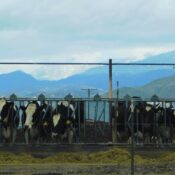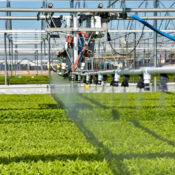
10 Essential USAG Practices for Safe and Sustainable Farming”
At USAG, we believe in promoting safe and sustainable farming practices that benefit both farmers and the environment. Our commitment to excellence drives us to provide you with the most comprehensive guide on the 10 essential USAG practices for safe and sustainable farming. By implementing these practices, you can not only enhance the quality and productivity of your farm but also ensure the long-term viability of your operations.
1. Soil Health Management
The foundation of any successful farm lies in its soil health. By adopting sustainable soil management practices, such as crop rotation, cover cropping, and organic matter enrichment, you can improve soil fertility, water retention, and nutrient availability. Healthy soils contribute to higher yields, reduce erosion, and promote overall ecosystem balance.2. Water Conservation and Management
Water scarcity is a growing concern worldwide. As responsible farmers, it's crucial to implement efficient irrigation systems, such as drip irrigation or precision sprinklers, to minimize water wastage. Additionally, proper water management techniques, such as rainwater harvesting and pond construction, can help you conserve water resources and maintain a sustainable water supply for your farm.3. Integrated Pest Management (IPM)
Pest control is an essential aspect of farming, but it's vital to do it in an environmentally friendly and sustainable way. Integrated Pest Management (IPM) emphasizes the use of natural pest control methods, such as biological controls, crop rotation, and pest-resistant varieties. By minimizing the use of synthetic pesticides, you can protect beneficial insects, reduce chemical residues, and maintain ecological balance on your farm.4. Nutrient Management
Balanced nutrient management is crucial for optimizing crop growth while minimizing environmental impacts. Implementing practices like soil testing, targeted fertilization, and precision nutrient application allows you to provide crops with the necessary nutrients without overapplication. This approach minimizes nutrient runoff, prevents water pollution, and ensures the long-term sustainability of your farming operations.5. Conservation Tillage and Erosion Control
Traditional tillage practices contribute to soil erosion and degradation. Conservation tillage techniques, such as minimum tillage or no-till farming, help retain soil moisture, reduce erosion, and enhance soil structure. By adopting erosion control measures like contour plowing and terracing, you can effectively manage soil erosion, preserve topsoil integrity, and protect the long-term productivity of your fields.6. Biodiversity Conservation
Maintaining biodiversity is crucial for a healthy and sustainable farm ecosystem. Encourage the presence of native plants, create wildlife habitats, and implement buffer zones to support diverse populations of beneficial insects, birds, and other wildlife. Biodiversity conservation promotes natural pest control, pollination, and overall ecosystem resilience, making your farm more resilient to environmental changes.7. Energy Efficiency
Reducing energy consumption on the farm not only helps the environment but also saves costs. Embrace energy-efficient technologies, such as solar panels for electricity or geothermal heating systems, to minimize reliance on fossil fuels. Implementing energy-saving practices like efficient machinery use, insulation, and lighting improvements can significantly reduce your farm's carbon footprint.8. Waste Management
Proper waste management is essential for maintaining a clean and sustainable farming environment. Implement recycling programs, composting, and proper disposal systems to manage farm waste efficiently. By reducing waste and utilizing organic materials effectively, you can enhance soil fertility, reduce pollution risks, and contribute to a more sustainable agricultural system.9. Farm Risk Management
A comprehensive risk management plan is crucial for the long-term success of any farming operation. Identify potential risks such as extreme weather events, market fluctuations, and disease outbreaks. Implement strategies like diversification, insurance coverage, and emergency preparedness to minimize the impact of unforeseen events and ensure the financial sustainability of your farm.10. Continuous Learning and Adaptation
The agricultural landscape is constantly evolving, and staying updated with the latest research and best practices is essential. Invest in ongoing education, attend workshops, and collaborate with agricultural experts to stay ahead of industry trends. By embracing innovation and adapting your practices, you can ensure the long-term success and sustainability of your farming endeavors. By incorporating these 10 essential USAG practices into your farming operations, you can not only enhance productivity and profitability but also contribute to a more sustainable future. At [Your Company Name], we are committed to supporting farmers in their journey towards safe and sustainable farming practices. Join us in creating a greener, more resilient agricultural sector.Recent Posts
Unlocking the Potential of Your Farm with USAG
+1 (805)-455-7524
info@usagfarm.us



